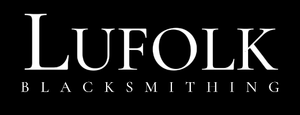Forget just axes and swords! The seax, a single-edged knife, was a constant companion for both Saxons and Vikings. This blog explores its history, variations, and enduring legacy.
More Than Just a Weapon
The seax (a sax or scramasax) means "knife" in Old English. Used by Germanic tribes like the Anglo-Saxons and Vikings, it was a versatile tool for everyday tasks like cutting, carving, and food prep. Over time, it also became a weapon in combat.
Seax 101: Design and Variations
- Single-edged blade: Length varied from a small knife to a long sword.
- Straight or slightly curved edge: Made it versatile for cutting and thrusting.
- Material: Typically forged from steel with a wood, bone, or antler handle.
- Decoration: Intricate carvings or inlays on the blade or handle (depending on region and period).
Types of Seaxes:
- Short Seax (3-12 inches): A utility knife for everyday tasks.
- Long Seax (12-24 inches): Used for both combat and tasks, featuring a longer, heavier blade.
- Broken-Back Seax (12-18 inches): Recognizable by its sharp angle near the tip, often used in combat and as a status symbol. (Especially associated with Anglo-Saxons and Vikings!)
- Broad Seax (10-20 inches): A heavy blade for combat and heavy-duty tasks.
- Langseax (over 24 inches): Primarily a weapon with a long, straight blade.
- Hadseax (6-12 inches): A versatile tool for both utility and combat.
A Legacy Unearthed
Archaeological finds like Viking burials and Anglo-Saxon graves reveal the seax's importance in both cultures. Here are some examples:
- Viking Woman Burial at Adwick-le-Street: Fragments of an iron knife (likely a seax) found in a woman's grave.
- Anglo-Saxon Burial at Brighthampton: A seax knife among the grave goods.
- Anglo-Saxon and Viking Ship Burials: These burials often included seaxes, reflecting the status of the deceased.
The Seax: A Multifaceted Legacy
The seax wasn't just a tool; it was a symbol of status and identity. Its various designs showcase the ingenuity and adaptability of the Germanic peoples. Today, the seax continues to fascinate historians and inspire modern reproductions, keeping this remarkable tool's legacy alive.
Conclusion
The seax stands as a testament to the resourcefulness and adaptability of the Germanic peoples. More than just a weapon, it served as a vital tool for everyday tasks and a symbol of status. Archaeological discoveries continue to shed light on its widespread use, while modern reproductions ensure this multifaceted blade remains a source of fascination for centuries to come. The seax's legacy is a reminder of the ingenuity of our ancestors and the enduring allure of these historical artifacts.
